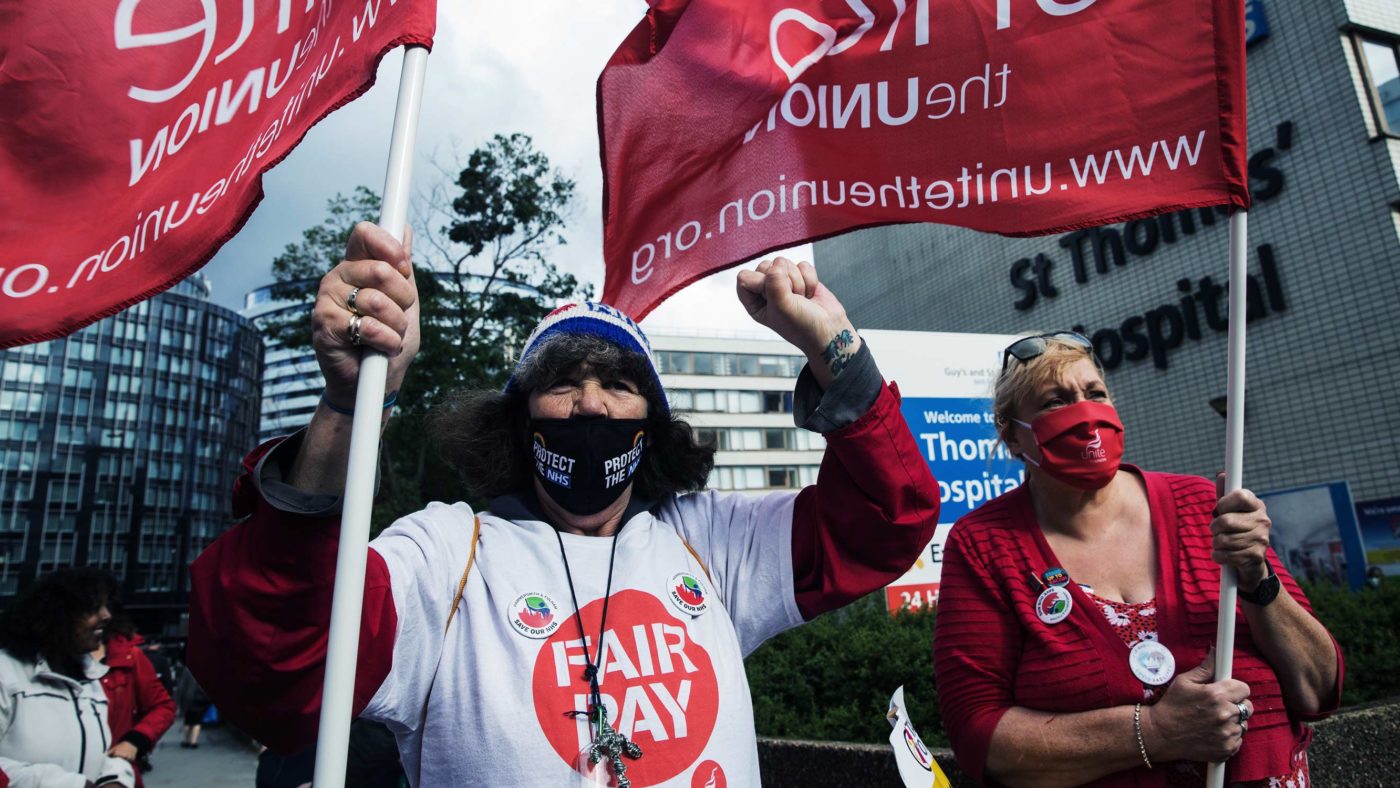The apparent success of Sharon Graham in being elected General Secretary of Unite, the UK’s second largest union and the Labour Party’s biggest funder, underlines the increasing feminisation of the trade union movement.
We already have Frances O’Grady at the top of the TUC and Mary Bousted heading the National Education Union. This trend is perhaps unsurprising given that female trade union members now outnumber men by almost a million.
A major reason for this is the concentration of women in public sector jobs such as teaching and healthcare. Just over half of public sector workers are in unions, compared to a paltry 13% in the private sector – and a high proportion of these are in areas such as energy supply and the train operating companies, which were in the public sector when quite a few of their older workers became union members.
Ms Graham has a reputation as a left-winger, and her election may have some impact on Labour’s internal politics, perhaps increasing the difficulties Keir Starmer faces in moving his party towards the electoral centre. Then again her pitch to the membership was very much as the ‘bread and butter’ candidate, focused on jobs, pay and conditions, rather than factional infighting.
However, that perennial fight for a better deal is unlikely to lead to greater union militancy in the form of a return to mass industrial action. Old-style full-on strikes, though not dead, are rare beasts indeed these days. In the 12 months to January last year, there were just seven stoppages (five in the public sector) with 242,000 working days lost. Compare this with the 177 strikes and 29 million days lost in the year to January 1980.
In those long-gone days, unions were staunch defenders of ‘free collective bargaining’ which often involved long and costly strikes. Calm and positive negotiations were for cissies; almost exclusively male unions representing miners, dockers and transport workers relied heavily on metaphorical and sometimes literal muscle. Today’s occasional strikes, by contrast, are often symbolic and performative rather than having any real impact on employers.
With reduced membership numbers, massive changes in industrial structure, and restrictive anti-strike legislation, unions have had to change their game. Once upon a time employment regulation – minimum wages, unfair dismissal rules, anti-discrimination laws, guaranteed holidays – was anathema to macho union leaders, who thought that they could win more for their members by continually pushing employers for greater concessions. Today’s much-changed unions have two main strategies, both of which focus on state intervention in the labour market rather than pressurising individual employers.
One is to support members in cases before employment tribunals. This has a strong appeal in a world where individuals are much more aware of their rights but can need help in asserting them. But unions also often organise what are essentially class actions (for example in the long-running ASDA case where largely female supermarket workers gained pay parity with mainly male warehouse workers) in the hope of winning new and more generous interpretations of the law.
The second major aspect of modern unionism is its role as lobbyist for further changes to the legal environment for employment. And here the feminisation of the union movement has had an obvious impact.
Current demands from the TUC and individual unions such as Prospect and Unite include a number of things that matter particularly, though by no means exclusively, to women – a right to flexible working, a right to work from home, and a right to disconnect (that is, for employees not to have to work, or be contacted by employers, outside the normal working day). Further items on the wishlist include enhanced maternity and paternity pay, a four-day week, cheaper and better childcare, stronger action against sexual harassment, and a new contractual status for gig workers.
Union activity in the 1970s and 1980s was immensely damaging to the economy, helping to raise inflation and damaging productivity. Long strikes created major problems for people’s everyday lives, and exacerbated divisions within society which still persist today. At times violent confrontations led by (male) militants frightened some into thinking that our democratic society was fundamentally threatened.
It’s good that today’s more female-friendly unions are far less confrontational. However some of their demands carry dangers: a four-day week without pay cuts in the public sector would raise costs and probably worsen services; a right to home working would probably, over time, lead to lower earnings; a right to disconnect for permanent workers could lead to tighter monitoring or greater use of freelancers. And ‘one-size-fits-all’ regulation rarely turns out well.
We need to be careful and avoid acquiescing in seemingly moderate policies which nevertheless have the potential to damage businesses, lead to slower productivity growth, endanger jobs and benefit some sections of the workforce at the expense of others. This was what the male-dominated trade union dinosaurs of the past did through their emphasis on aggressive confrontation; it would be a pity if the growing feminisation of trade unions led to similar damage by more subtle means.
Click here to subscribe to our daily briefing – the best pieces from CapX and across the web.
CapX depends on the generosity of its readers. If you value what we do, please consider making a donation.


